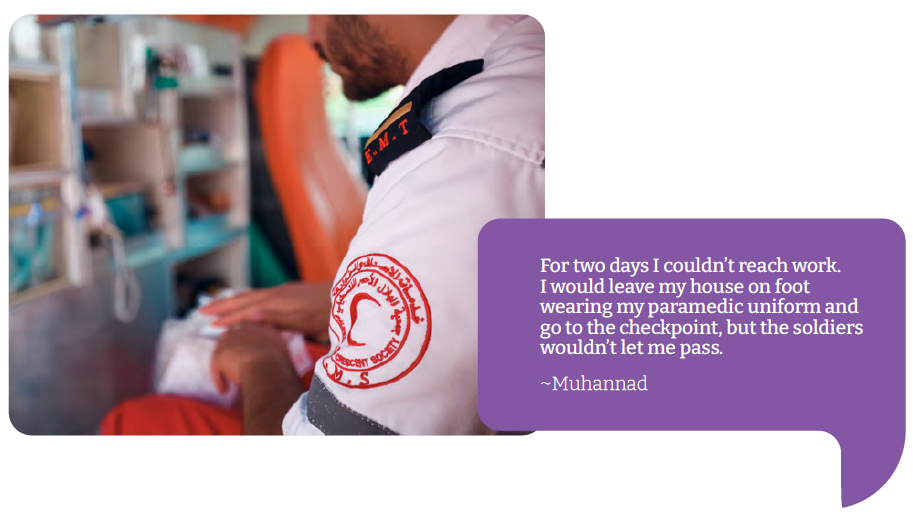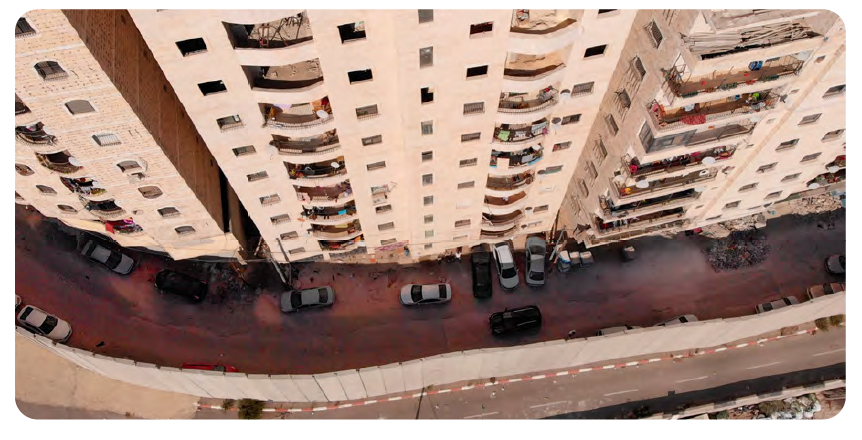From 8 to 11 October, Israel enforced a near-complete closure of Shu’fat refugee camp and adjacent areas of Anata. The area, home to refugees and non-refugees in east Jerusalem, is surrounded by Israel’s separation barrier, which takes the form of an 8- to 9-metre-high concrete wall enclosing the camp. In addition to the existing checkpoint west of the camp, Israeli forces established a flying checkpoint to the east, controlling all movement in and out.
home to refugees and non-refugees in east Jerusalem, is surrounded by Israel’s separation barrier, which takes the form of an 8- to 9-metre-high concrete wall enclosing the camp. In addition to the existing checkpoint west of the camp, Israeli forces established a flying checkpoint to the east, controlling all movement in and out.
The closure of the camp resulted in severe restrictions on access to health care for the population of 130,000. Ambulances, patients, and health care workers were prevented passage at checkpoints. Muhannad, a paramedic with the Palestine Red Crescent Society (PRCS), was affected and unable to reach his place of work.
“For two days I couldn’t reach work. I would leave my house on foot wearing my paramedic uniform and go to the checkpoint, but the soldiers wouldn’t let me pass.”
With violence and confrontations inside the camp, Muhannad put his skills to use helping people as he could: “I have a paramedic bag from PRCS. I used to take my bag and go to help anyone who had been injured. Yet there was no way to transport them to hospital, the injured had to be treated inside homes or in small clinics. I was exposed when I was caught trying to provide medical assistance to some youth. Some soldiers came from behind and surrounded us. Even though I was wearing my vest and they could see I was holding a first aid kit I was targeted. I hid behind a piece of wood but we were still attacked with rubber bullets until a car came and helped me get out of the area.”
During the period, WHO documented the prevention of access of six ambulances attending to cases with seizures, an injury, chest pain, abdominal pain, a patient requiring kidney dialysis and a woman in delivery. There were an additional ten instances documented of severe delays in access for ambulances. Meanwhile, patients requiring access to primary care and outpatient care outside the camp were prevented from passage at checkpoints, along with health personnel requiring access to places of work.
Obstacles to movement affecting the camp are longstanding. The checkpoint to the west can only be used by residents of Shu’fat refugee camp with east Jerusalem residency. Individuals living in Shu’fat refugee camp with West Bank IDs and approved permits to reach east Jerusalem or Israeli hospitals for health care would have to exit to the east and enter the city via Qalandia checkpoint.
As well as obstacles to movement, residents of Shu’fat refugee camp experience chronic under-provision of municipal services and fragmented provision of health care. Lax building regulations mean that the area is very densely populated, with residents complaining about the quality of housing and overcrowding. Rubbish piles up in the streets due to infrequent refuse collection. Meanwhile, there is differential access to health care for residents with east Jerusalem IDs versus West Bank IDs, as well as for refugees compared to non-refugee residents. During a meeting with UN representatives at the time of the closure, community representatives called for stronger protection from the international community and an end to the severe restrictions on access to the camp.



